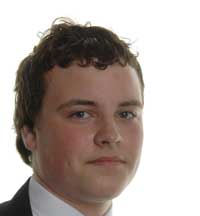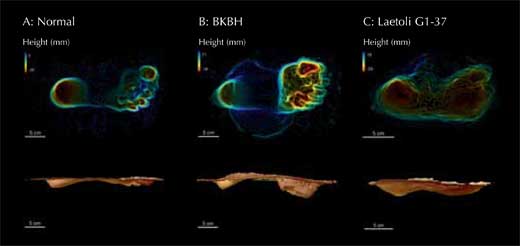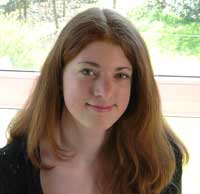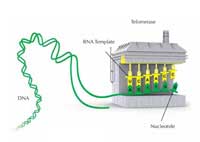The winners of the Science in School writing competition Inspire article
Eleanor Hayes introduces the winners of the Science in School writing competition.
In Issue 11 of Science in School, we interviewed science writer Rebecca Skloot and launched a competition for students to write a science story suitable for publication in a magazine or newspaper (Furtado & Rau, 2009). We asked Rebecca what made a good science story.
Her answer? “To me, good science writing is really just good writing that happens to be about a scientific topic. At the basic story level there is no difference.” So, she says, you need the same basic ingredients in science writing as in any kind of storytelling: characters, scenes, actions and a plot. These were some of the features we were looking for in the 117 entries submitted by students from across Europe.
It seems that the challenge we set in our competition was a tough one: many entrants (or their teachers) seemed to find the idea of writing an engaging story about science difficult. We received a lot of experimental reports – many of them good, but not what we were looking for. And we received quite a few engagingly written stories – but not about science. Fortunately, we also received plenty of entries that met all our criteria, and then the fun really began: our jury of six editors and science writers read, re-read, discussed and argued over the entries. We’d like to congratulate all of the students and teachers who took the time and made the effort to put pen to paper and send us their entries. We enjoyed reading all of them.
Our particular congratulations go to:
- Thomas Johnson, winner of the under-16 category, for his readable, thoughtful and well structured story of Mary Leakey’s discovery of early human footprints
- Annika Marx, winner of the 16+ category, for her thought-provoking story about the implications of research into telomerase.
One day in Africa in 1978
“I have always been interested in palaeontology and human evolution so when the opportunity to write this essay arose, that was the first subject I thought of. I chose to write about Mary Leakey because I believe she should be better known for the contribution she made to what we know about our origins.”
By Thomas Johnson, aged 13, Trinity Catholic High School, Woodford Green, UK

Image courtesy of Alan Mair
It was dry, and the afternoon heat bore heavily down on the plains below. It was a moment of fun, and the laughter rang out across the camp. A man ducked as another tossed the dried-up lump of elephant dung at him, then he stumbled, landing awkwardly on the hard, grey earth. Another figure, smaller and possibly female, bent double with laughter and moved towards him, sinking helplessly down to the ground. The country was Africa, and the people were scientists. The woman was Mary Leakey, a famous anthropologist, and beneath them, as they were just about to find out, were the first-ever known footsteps of man.
Let us leave them on the verge of this great discovery and find out a bit more about Mary Leakey and the part she has played in telling us about our past.
About Mary Leakey
Mary Leakey was born a long time ago, in 1913, in England. Her father was an artist, and the family lived in many different countries, including France and Italy. When she was a child, Mary’s father took her to see the bone tools and beautiful pre-historic cave paintings that had recently been discovered in southern France. Mary was excited by what she saw, and it made her think deeply about the people who had made and used the tools and created the paintings. Mary was inspired, and she talked about the joy of collecting and unearthing objects of beauty and interest. Together with her husband Louis, she began a journey of discovery, driven by her determination and curiosity to find out more about how we, the human race, came to be. She described what she did quite simply: “I dug things up. I was curious. And then I liked to draw what I found.”
She wanted to discover more about our beginnings, how we used to look and live and how we have evolved to look as we do now. She saw the past as a jigsaw: as each piece is found and added, it slowly builds up a clearer and more complete picture. Mary herself found some very important pieces of the jigsaw, as we shall see.
About me
We all know that we are human beings and part of the human race. We are an intelligent species, and we have spread all over the world, changing it in many ways. We have invented new technology, explored space and can cure many illnesses. Maybe we have come to see ourselves as different and separate from the natural world, but perhaps we are not that different after all. By beginning to understand who we are and where we have come from, we might start to see our relationship with other life on our planet.
We already know that we are descended from our parents, our grandparents, our great-grandparents, our great-great-grandparents and so on. These are our ancestors. If we could rewind time over millions of years, like a videotape, we would see a fascinating pictorial history emerge of how we have evolved. The further back we go, the more ape-like in appearance we become. All the evidence we have today suggests that far back in our remote and distant past, we shared a common ancestor with the ape family.
Back to the footprints
Mary and her team noticed some strange markings in the ground beneath them. They began to dig, and found indentations that had set hard in the volcanic ash. Further excavations showed a clear footprint, the first of many in a trail of prints disappearing off across the plains. The prints showed that three people, one larger, one smaller, and one quite tiny had walked together that way over 3 million years ago. Was it a father, mother and child? Every now and then the tiny prints are superimposed on the others. At one point along the way, the medium-sized figure paused and turned to her left. Were they escaping from danger? Had she heard an animal, or maybe even the rumbling of the volcano nearby? We don’t know. We can only guess. This family may have looked very different to how we do today, but that moment of doubt, hesitation and checking for danger is something that, three million years later, we can still understand and share.
One thing is clear from this discovery, and that is that we know that three million years ago, man was walking on two legs and not four. This is much earlier than scientists had previously thought.

Image courtesy of Raichlen DA, Gordon AD, Harcourt-Smith WEH, Foster AD and Haas WR; image source: Wikimedia Commons
Mary Leakey has been able to find us some of the most important information about our past, and help us understand how we came to be. She has also shown us how important Africa is in understanding our origins. Many people now believe that Ethiopia (in Africa) is the birthplace of humans. As a woman, it was difficult for Mary to be fully appreciated and accepted as a scientist, and she received very little credit for what she did. She worked quietly and skilfully, often in the shadow of her husband, yet her biggest discovery, that of the footprints in Laetoli, was made after he died. Her enormous contributions to our understanding of how our human race has evolved are still being measured.
Eternity…?!

Image courtesy of Mathias
Schaeben
“I wrote the story and chose this topic after I read an article about the Nobel laureates, just a few days before the deadline of the competition. The discovery of telomerase and the opportunities it offers appealed to me in our lessons, so I found it very interesting to get more into the topic. When I started writing, the character of an old, annoyed man came into my mind and I used it to fill the story with life.”
By Annika Marx, aged 17, Werner-Heisenberg-Gymnasium, Leverkusen, Germany
“John?” shouted Martha as she went upstairs to my office. The staircase shook with each footstep. I put my head in my hands and sighed. I was working at my iMac, but she didn’t care.
“Yes, Martha, darling, what happened?” My voice was friendly and patient, as always. It is the best way to get through this every time.
Always complaining and never satisfied. Like the woman in the tale of the man who caught a fish that granted him three wishes. At the end they were sitting in the same old hut as before, just because the woman couldn’t moderate her avarice.
“The freezer is broken again… Can’t you just come for a minute and fix it? I need my frozen strawberries to stay frozen. I wanted to make this delicious dessert for Chris and Liz when they come with Jack and Toby. Jill will also come and bring lil’ Sarah, too. You shouldn’t spend your Thanksgiving up here in this dark room. Come downstairs and celebrate with your family!”
“No, thanks. It’s every year the same. I’m fed up with it, believe me. And the freezer is from 2050… you can throw it away, I don’t think that I can fix it once again. You’ll have to freeze your strawberries somewhere else.”
“You would expect that they could preserve strawberries now, with all that new technology, but not at all. What do these AOLs [i.e. ameliorants of life] get paid for?!”
“Please hon, be quiet, you don’t know what you are talking about. Go to our neighbours and ask if you can store your strawberries in their freezer, okay?” Whew, now she’s going away… at last. As I said, always complaining.
To tell the truth, science has come a long way in the past few decades. Cancer therapy was invented, and now people are able to live hundreds of years, just because of one small enzyme, telomerase. People see their grandchildren raise their kids and them raise their kids and so on. Every family celebration costs thousands of dollars now. And who has to pay for it?! The oldest male member of the family. Me!

to enlarge image
Image courtesy of Sierra
Sciences, LLC; image source:
Wikimedia Commons
After 137 years of work in the same business, doing the same things as always, it gets terribly boring. I’m one of hundreds of scientists who work for the ‘Ameliorants of Life’ – the people who tried to be superior to God. We are selected researchers from many different countries, brought together to realise the new ideas of the AOLs, while they sell our products. We get the work, they get the glory and the money.
It was very interesting at the beginning to explore the cells and telomerase to find new, better ways to make cells immortal, but after a while it seemed senseless. The discovery was made in 2009* – real cutting-edge science, ‘leading to a new world without death’, to eternal life and stuff. Elizabeth Blackburn, Carol Greider and Jack Szostak discovered how chromosomes are protected against degradation during cell division. They found out that the telomeres, the caps on the ends of chromosomes, are shortened with every cell division. If the telomeres are shortened, cells age.
But there is an enzyme, telomerase, which can build up the telomeres, so that the cells don’t age. That’s why cancer cells never stop growing, and why so many people died because of cancer before telomerase was discovered. Now everyone takes standard medication in order to stimulate the body to produce more telomerase, and everybody lives to the age of more than 500 without ageing.†
No more white hair, no wrinkles, no lumbago and no menopause. Everlasting fertility for men and women. The human population grows so much that half of all humans have no home or just one small room, shared with three or more other people. Unfortunately, it will still take some time before we can live somewhere out in space, but the scientists are working on this problem. In my opinion, most of us will die of hunger and thirst first, not really an encouraging prospect, is it?
That’s why I decided to stop taking the medicine and to let nature do its work. It’s just that I can never tell Martha about it. She annoys me very often, it’s true, but it’s hard to live together for over 150 years, and I still love her. Most of the other people of my age who I know were already married five to six times. It’s now 20 years since I stopped taking the medicine, and I can feel how I’m ageing. My hair is getting thin and white, but fortunately I’ve found an old hair tinting lotion that still works. We certainly don’t have any hair tinting lotions any more, nobody needs it, but I do, so that nobody notices what is happening to me. Martha would be terribly discomposed. And my back hurts. I’ll get an analgesic to stop the pain.
Eternal life, who cares?! My life has already been long enough for all eternity…
Editorial comments
*Although Elizabeth Blackburn, Carol Greider and Jack Szostak were awarded the Nobel Prize in Physiology or Medicine in 2009, their discoveries were actually made in the 1980s.
†Scientists studying cancer are looking for ways to turn telomerase off in cancer cells to try to prevent them from being immortal, whereas scientists studying ageing speculate that telomerase could give us greatly extended lifespans. Managing to extend lifespan while at the same time controlling cancer is the big challenge, and it would require very sophisticated medication to achieve both aims at the same time.
References
- Furtado S, Rau M (2009) How to write a good science story: writing competition. Science in School 11: 85-88.
Resources
- To learn more about the research for which Elizabeth Blackburn, Carol Greider and Jack Szostak were awarded the Nobel Prize in Physiology or Medicine in 2009, read the press release and other material available on the Nobel Prize website: http://nobelprize.org/nobel_prizes/medicine/laureates/2009





